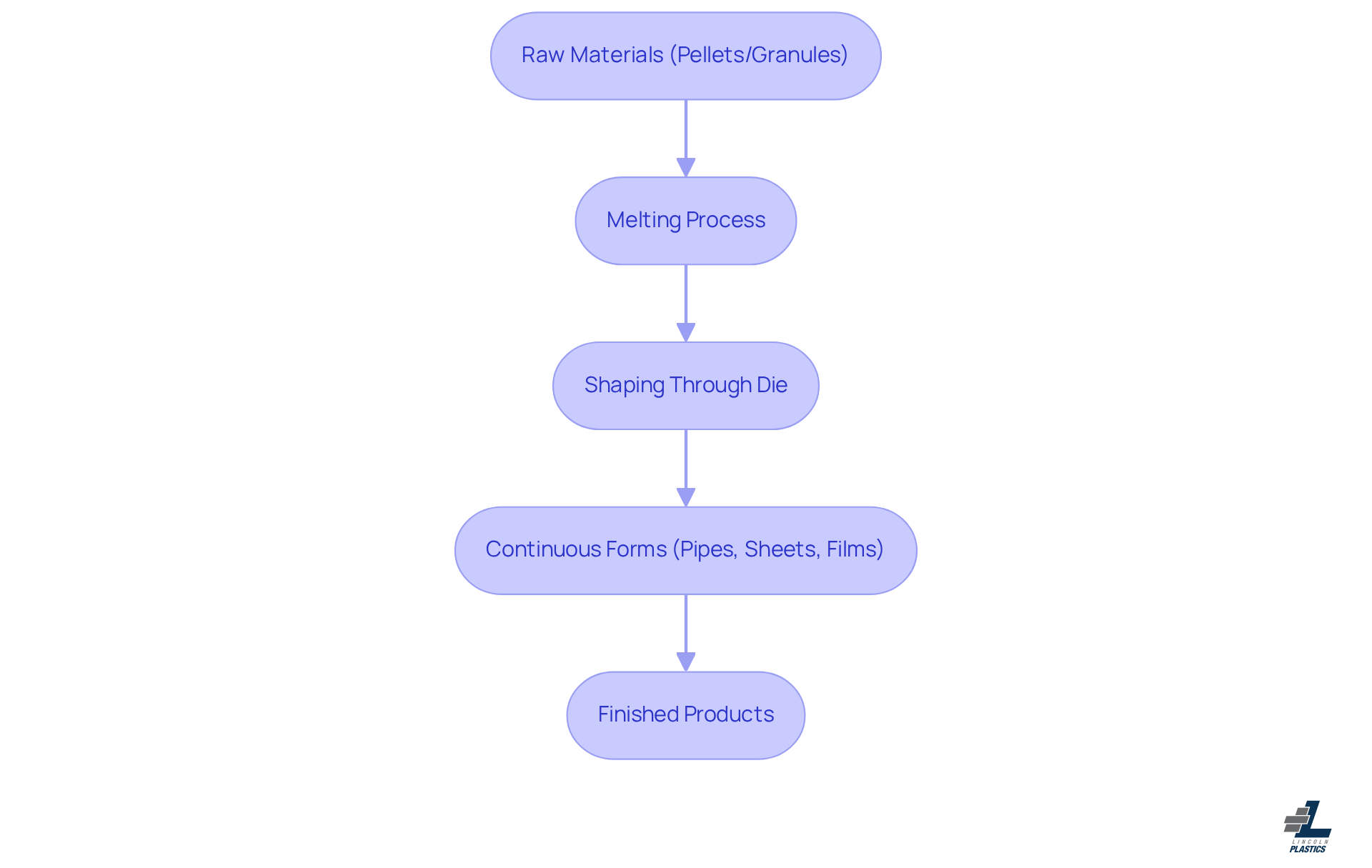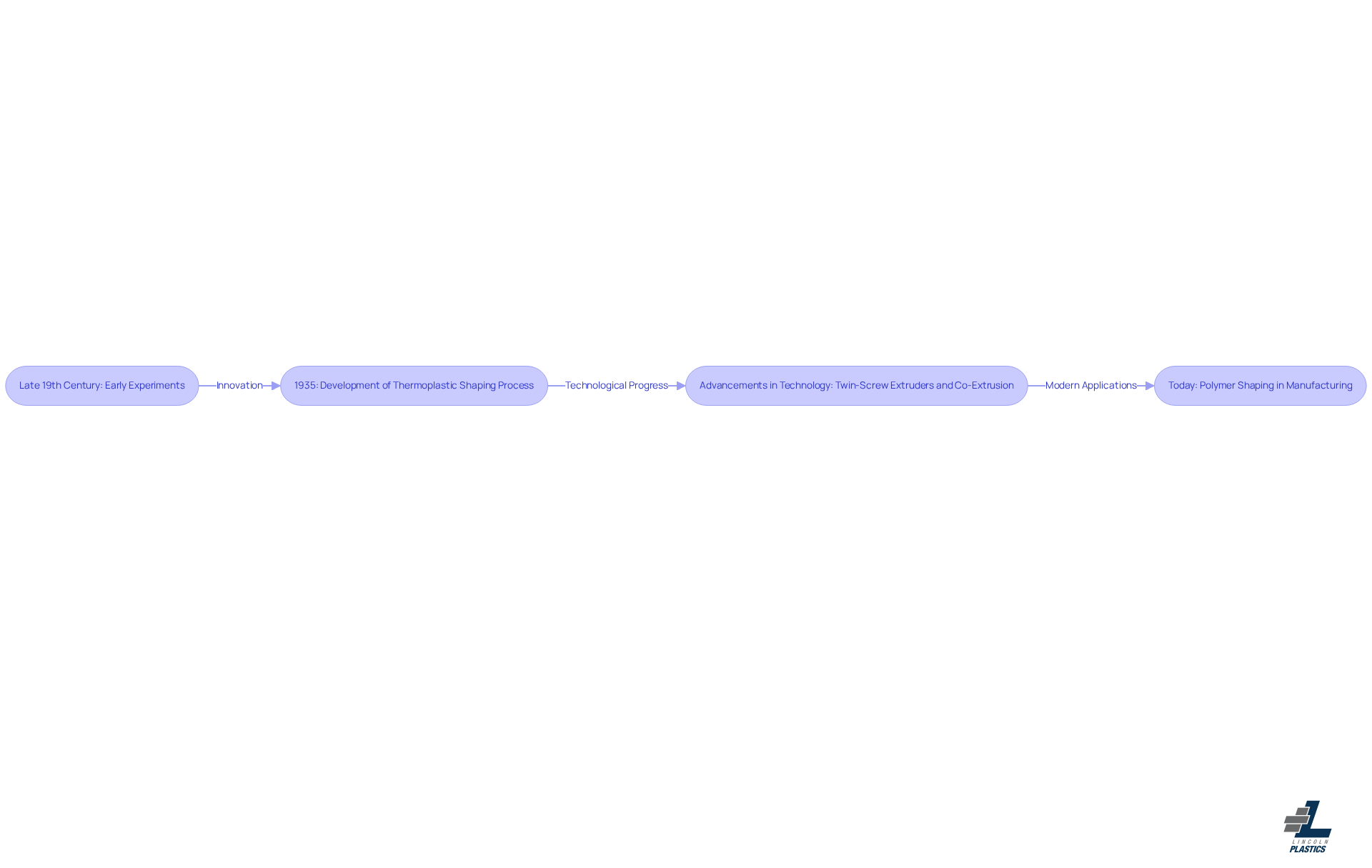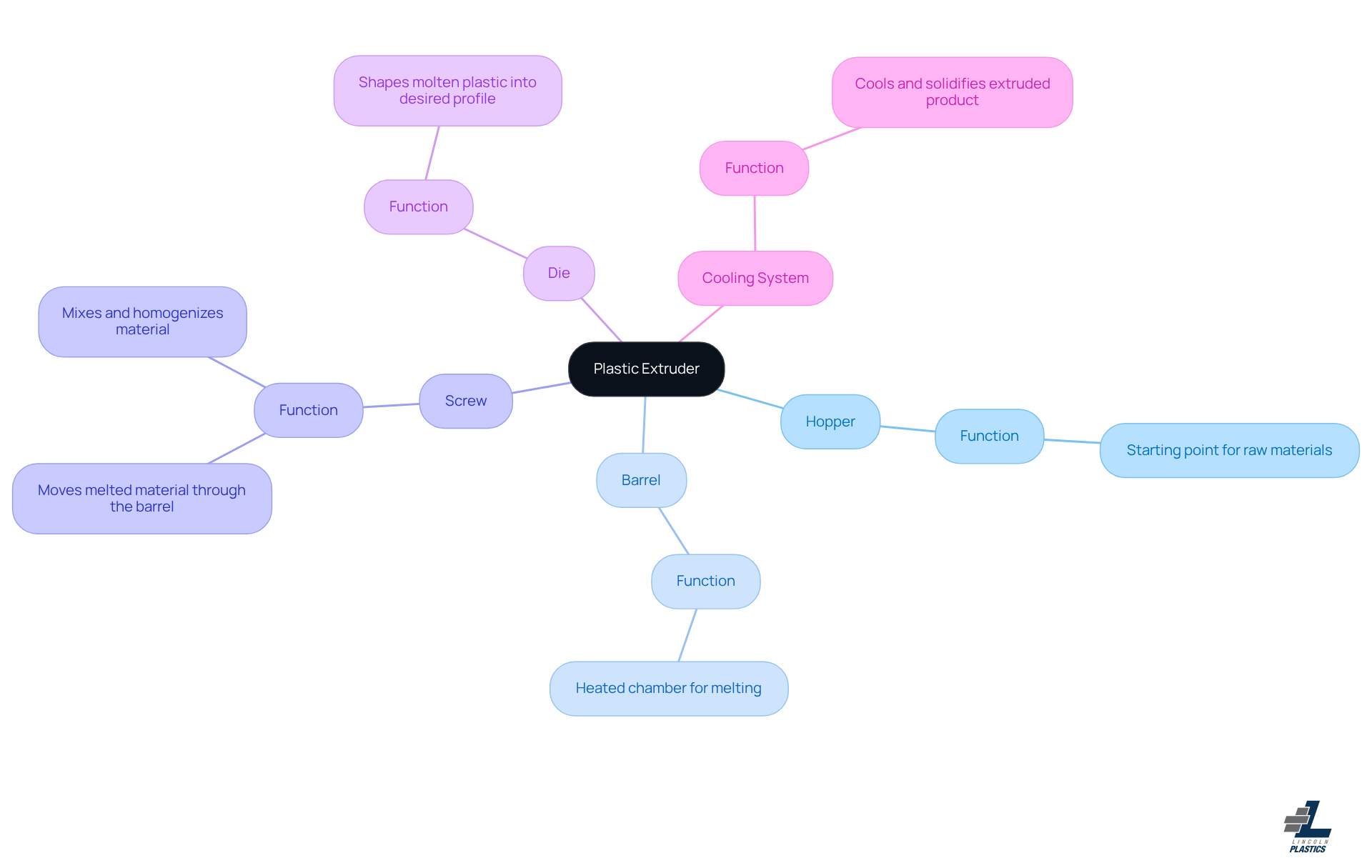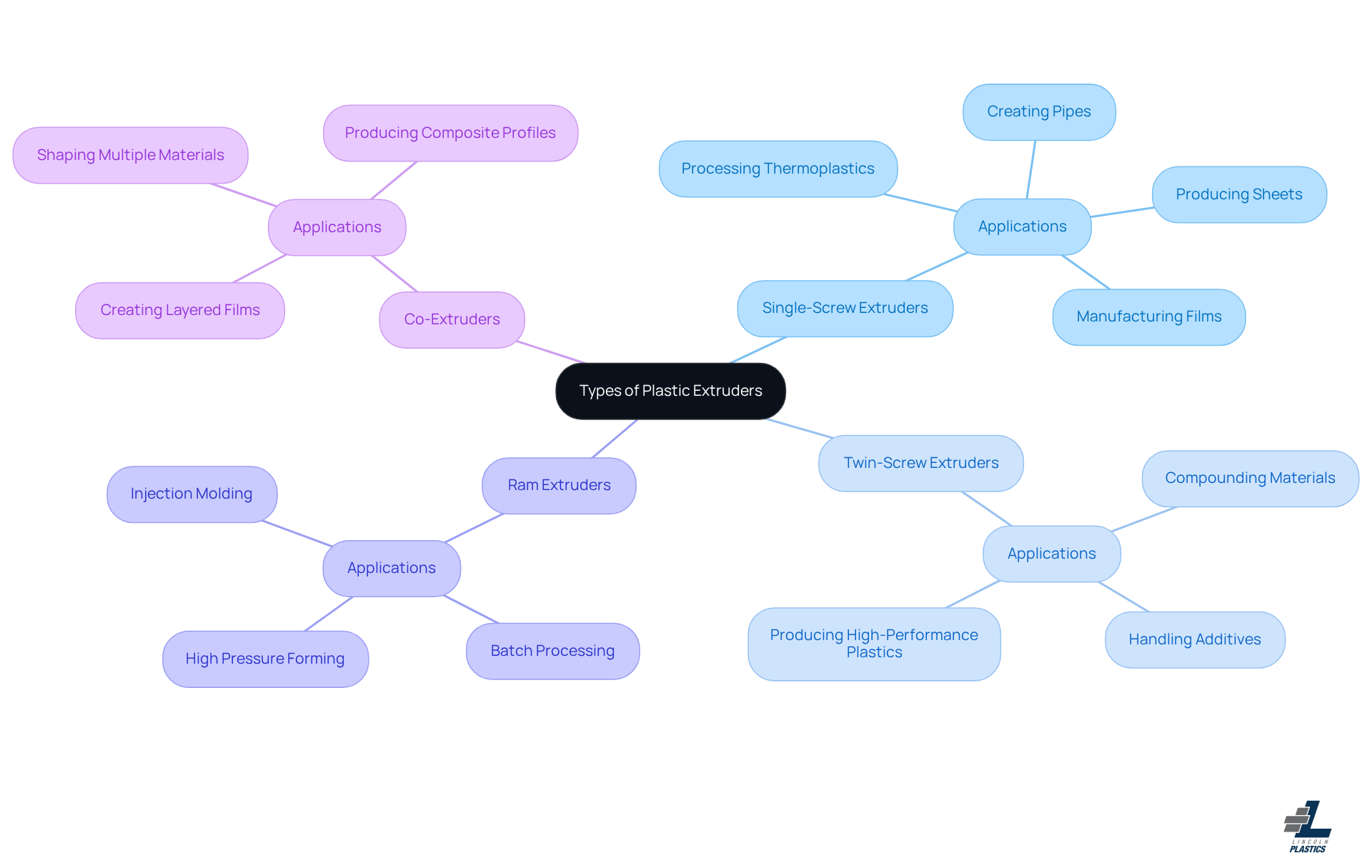
What Is a Plastic Extruder? Key Functions and Applications Explained
Overview
Have you ever wondered how raw plastic materials get transformed into those sleek, continuous shapes we see everywhere? Well, that’s where a plastic extruder comes into play! This nifty machine melts down plastic and pushes it through a die, creating all sorts of synthetic products.
Now, let’s talk about why this process is so crucial. The extruder is a key player in industries like construction and automotive, helping to produce everything from pipes to car parts. It’s fascinating how something so technical can have such a big impact on our daily lives, right?
So, what are the main components of an extruder? Understanding this can really help you appreciate the magic behind the machine. Each part works together to ensure that the plastic is melted and shaped just right.
Next time you see a plastic product, take a moment to think about the journey it took to get there. Isn’t it amazing how technology shapes our world? If you’re curious to learn more about plastic extrusion and its applications, dive deeper into the topic! You might just find it as intriguing as I do!
Introduction
Have you ever stopped to think about the machinery behind the plastic products we use every day? A plastic extruder is a key player in this manufacturing world, turning raw materials into all sorts of shapes and forms that are essential for different industries. In this article, we’ll explore what plastic extruders do and why they matter, from making pipes to crafting complex composite materials. So, what makes these machines so vital, and how have they changed to keep up with the demands of modern manufacturing?
Now, let’s dive in and discover the fascinating role of plastic extruders!
Define Plastic Extruder: Function and Purpose
Have you ever wondered how those synthetic products we use every day are made? Well, let’s dive into what is a plastic extruder!
What is a plastic extruder? It is a nifty device that plays a crucial role in producing synthetic materials. It takes raw materials, usually in the form of pellets or granules, melts them down, and shapes them into continuous forms.
So, what is a plastic extruder and what’s its main job? It transforms solid materials into a molten state and then pushes that gooey goodness through a die to create specific shapes—think pipes, sheets, or films. This process is super important for making a wide range of synthetic components that find their way into industries like construction, automotive, and consumer goods.
What is a plastic extruder that makes it so special? Their ability to produce consistent and uniform products is a game-changer in the manufacturing sector. If you’re in the industry, you know how vital it is to have reliable equipment that delivers quality every time. So, next time you see a synthetic product, remember the unsung hero behind it—the extruder!

Trace the History and Evolution of Plastic Extrusion
Did you know that the history of plastic shaping goes way back to the late 19th century? It all started with some early experiments in processing materials. But the real game-changer came in 1935, thanks to Paul Troester and Ashley Gershoff in Hamburg, Germany. They developed the first genuine thermoplastic shaping process using a screw extruder, demonstrating what is a plastic extruder, which allowed for the continuous production of thermoplastics. Pretty cool, right? This innovation marked a major turning point in the industry, leading to the widespread adoption of shaping techniques.
Fast forward a few decades, and we’ve seen some amazing advancements in materials and machinery. Technologies like twin-screw extruders and co-extrusion help illustrate what is a plastic extruder, as they enhance mixing and enable the production of more complex profiles. It’s fascinating how far we’ve come! Today, polymer shaping is a fundamental manufacturing method, essential for creating a wide range of synthetic products. So, next time you use a plastic item, you might just appreciate the rich history behind it!

Examine Key Components and Mechanisms of Plastic Extruders
When it comes to synthetic extrusion, knowing what is a plastic extruder is essential to understand the key players that work together to make the magic happen. Let’s break it down:
- Hopper: Think of this as the starting point where raw plastic materials get fed into the extruder. It’s all about keeping that material flowing smoothly for processing.
- Barrel: This is the heated chamber in what is a plastic extruder where the polymer melts. With temperature controls in place, it ensures the material hits just the right melting point for optimal processing.
- Screw: Here’s where what is a plastic extruder truly happens! To understand what is a plastic extruder, one should know that the screw rotates and moves the melted material through the barrel and into the die. Its design is super important for mixing and homogenizing the material, which is key to hitting those quality standards.
- Die: As the molten plastic exits the extruder, it demonstrates what is a plastic extruder by shaping the material into the desired profile. Different die designs can create all sorts of shapes and sizes, tailored to meet specific OEM requirements.
- Cooling System: After the die, the extruded product needs to cool down to solidify its shape. This could involve air cooling or water baths, depending on what you’re working with.
These components really come together to ensure efficient and consistent production of plastic profiles, which is achieved by understanding what is a plastic extruder. It’s a complex process that requires precision! At Lincoln Plastics, we work closely with OEMs to make sure every product meets strict quality requirements. We even have special checks for fit and function, use multiple check gauges, and keep a dedicated quality book for documentation.
And hey, if you need specific colors, we can easily source those to match your Pantone specifications. It’s all about delivering tailored solutions that meet your needs!

Explore Types of Plastic Extruders and Their Applications
When discussing what is a plastic extruder, it’s important to note that there’s a whole range of types, each one tailored for specific tasks. Let’s break it down:
- Single-Screw Extruders: These are the most common ones you’ll see around. They’re perfect for processing thermoplastics and are super versatile, making them a go-to in industries for creating pipes, sheets, and films.
- Twin-Screw Extruders: Now, these guys have two intermeshing screws that really amp up the mixing process. They shine when it comes to compounding and handling materials with additives, especially in the production of high-performance plastics.
- Ram Extruders: If you’re looking at batch processing, ram extruders are your best bet. They work well for materials that need high pressure to form, often popping up in injection molding applications.
- Co-Extruders: These machines are pretty cool because they can shape multiple materials at once. This means you can create items with different characteristics, like layered films or composite profiles.
At Lincoln Plastics, we’ve been in the game since 1948, specializing in OEM irrigation items and cable management solutions. We pride ourselves on offering customized molding services, including bespoke profile shaping. Our commitment to quality assurance and customization means that every extruded item is crafted to meet our clients' exact specifications.
So, whether you need simple plastic profiles or complex multi-layered products, there’s an extruder type that fits the bill. Isn’t it fascinating how extrusion technology, particularly what is a plastic extruder, adapts to meet various manufacturing needs? If you’re curious about how we can help with your specific project, let’s chat!

Conclusion
So, what’s the deal with plastic extruders? Understanding this nifty piece of machinery really shines a light on its crucial role in making the synthetic products we use every day. These machines don’t just turn raw materials into usable forms; they also keep things consistent and high-quality in production. That’s why they’re a big deal across various industries, from construction to consumer goods.
Now, let’s take a quick trip through the history of plastic extrusion technology. It all started back in the 19th century, and we’ve seen some pretty cool advancements since then, like the introduction of the screw extruder. The article breaks down the key components of plastic extruders—think hopper, barrel, and die—and explains how they work together to create a wide range of plastic products. Plus, it dives into the different types of extruders, like single-screw, twin-screw, and co-extruders, each with its own special applications that boost manufacturing capabilities.
You might be wondering why plastic extrusion technology is so important. As industries keep pushing the envelope and looking for more specialized products, getting a grip on how plastic extruders work is key. Engaging with this knowledge not only helps us appreciate the complexities of manufacturing but also sparks curiosity about how these technologies can adapt to meet future challenges. By embracing advancements in plastic extrusion, we can pave the way for sustainable and efficient production methods that benefit both businesses and consumers.
So, why not take a moment to explore this fascinating world? Understanding plastic extrusion could open up new avenues for innovation and sustainability in your own work or interests!
Frequently Asked Questions
What is a plastic extruder?
A plastic extruder is a device used in the production of synthetic materials. It melts raw materials, typically in the form of pellets or granules, and shapes them into continuous forms.
What is the main function of a plastic extruder?
The main function of a plastic extruder is to transform solid materials into a molten state and then push that material through a die to create specific shapes, such as pipes, sheets, or films.
Why is the plastic extrusion process important?
The plastic extrusion process is important because it allows for the production of a wide range of synthetic components used in various industries, including construction, automotive, and consumer goods.
What makes plastic extruders special in manufacturing?
Plastic extruders are special in manufacturing because they produce consistent and uniform products, which is crucial for ensuring quality and reliability in the production process.


